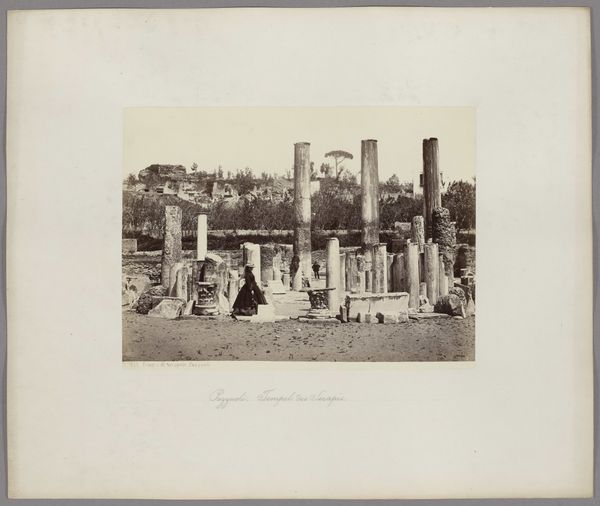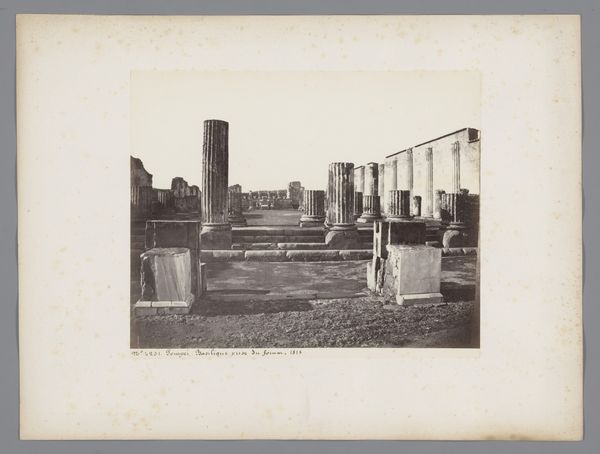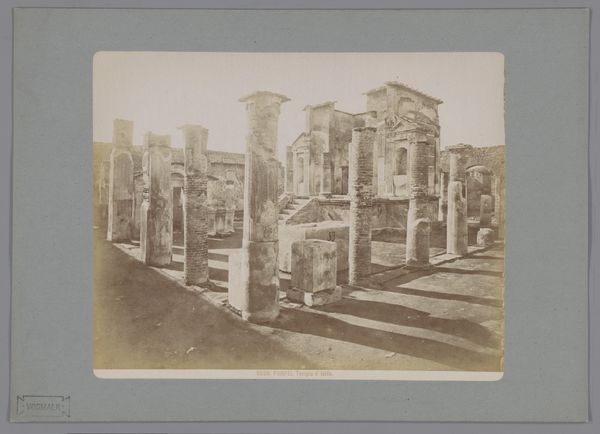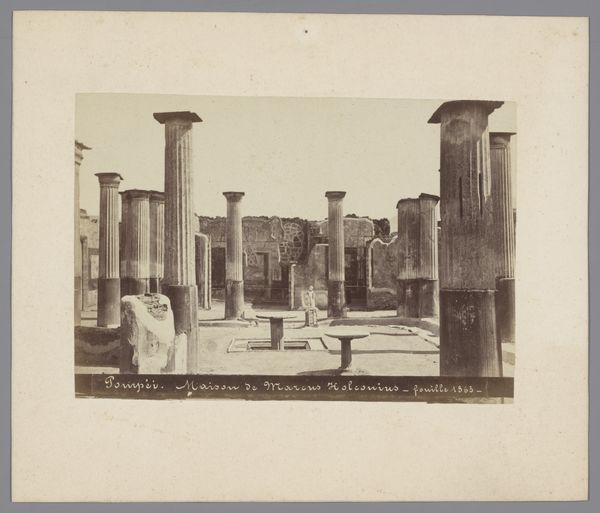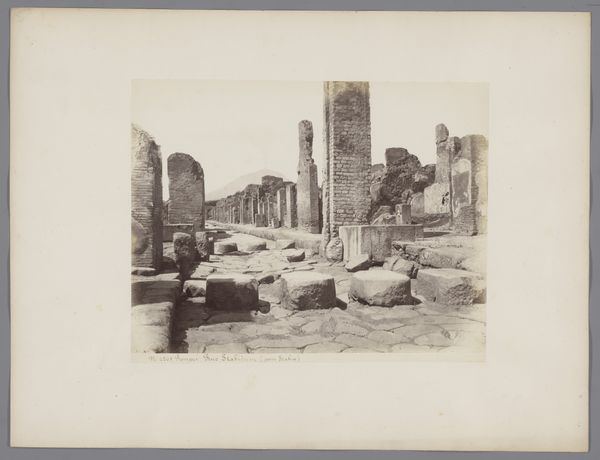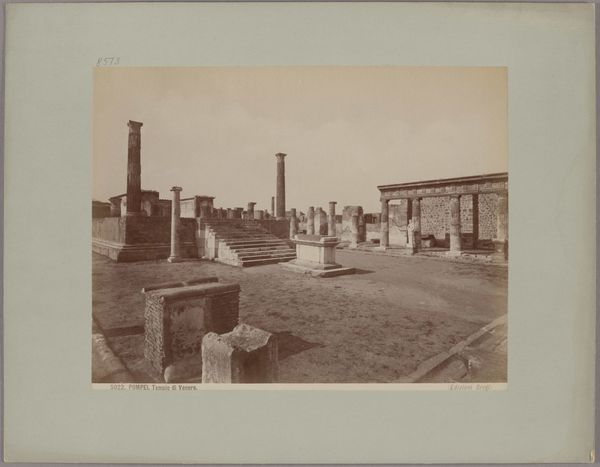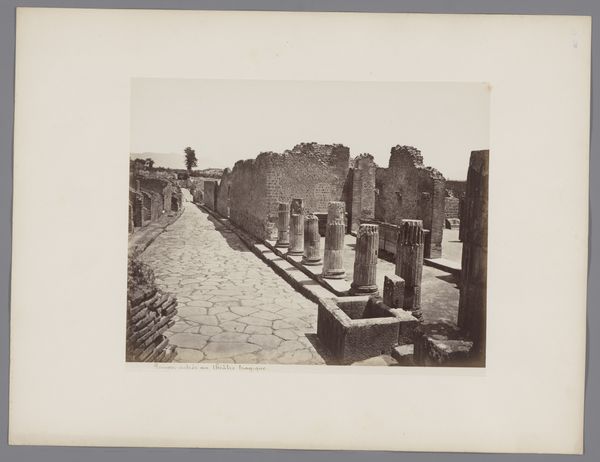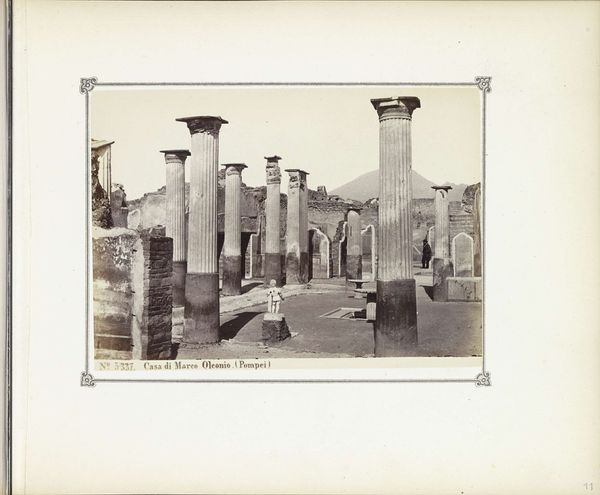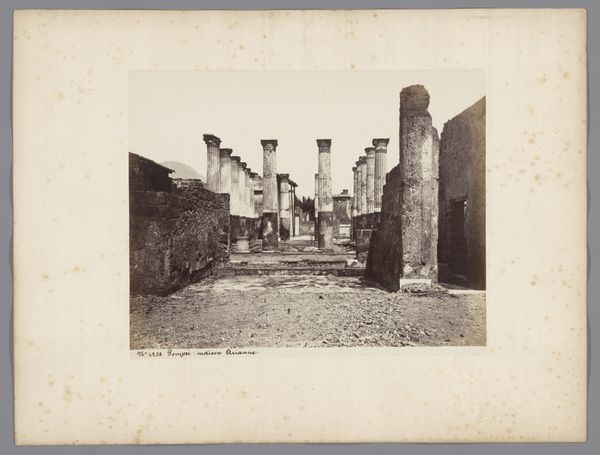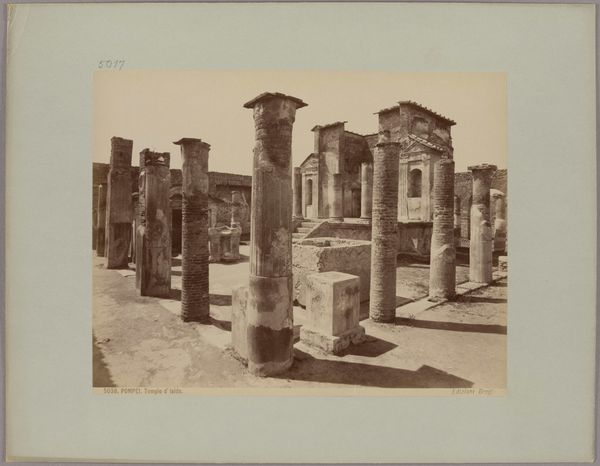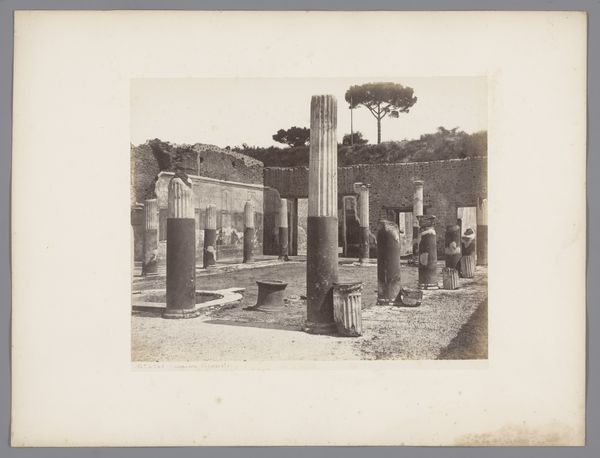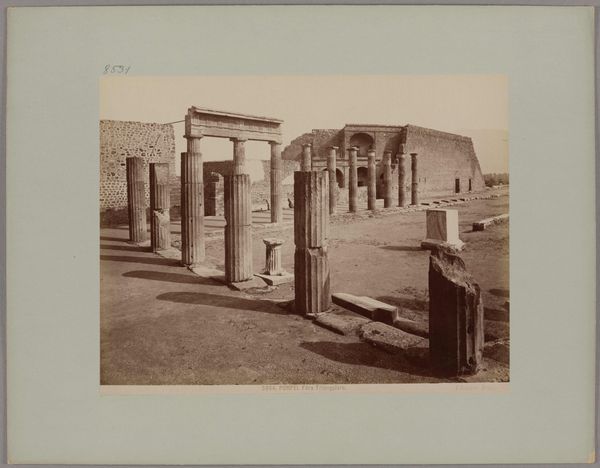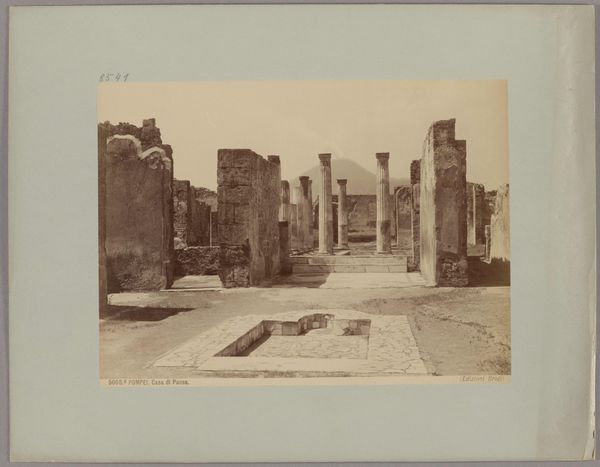
Copyright: Public Domain
Editor: This is Giorgio Sommer's "Pozzuoli, Temple of Serapis," taken around 1865. It's an albumen print capturing the ruins. I’m immediately struck by the contrast between the grandeur of the remaining columns and their obvious decay. What stands out to you most about this photograph? Curator: The socio-political context is really what grabs me here. In the mid-19th century, there was this widespread fascination with the classical world, particularly amongst European elites. Photography like this served to both document and romanticize these sites, bolstering a narrative of European cultural inheritance from these ancient empires. Look at how the figures within the frame become almost props, placed there to enhance the scale and evoke a sense of awe. Who do you think this image was intended for? Editor: Possibly wealthy tourists wanting a souvenir? Or maybe scholars wanting a record? Curator: Precisely! And both audiences play into the political implications. Souvenirs reinforced the idea of cultural ownership, while scholarly documentation cemented a specific, often biased, historical narrative. The act of photographing itself—choosing the angle, the light—it's never neutral. It creates a very particular public image. The temple itself, having been misidentified, showcases the misunderstandings the western world can have of other cultures. Do you notice how it emphasizes certain "picturesque" elements? Editor: Yes, I see that, the way the light hits some of the broken columns, almost as if arranged for effect. What’s interesting is how the very act of documenting these ruins could impact perceptions and even policies related to conservation and restoration. Curator: Absolutely. Early photography played a vital role in shaping the public's understanding, and, by extension, the fate of these historical sites. I'm interested to see how our understanding of cultural appropriation evolves over time and shapes future policies about items like this. Editor: It’s fascinating to think about the layers of meaning embedded in what seems like a straightforward landscape photograph. Curator: Indeed, looking beyond the surface is essential to understanding art's true role in our society.
Comments
No comments
Be the first to comment and join the conversation on the ultimate creative platform.
